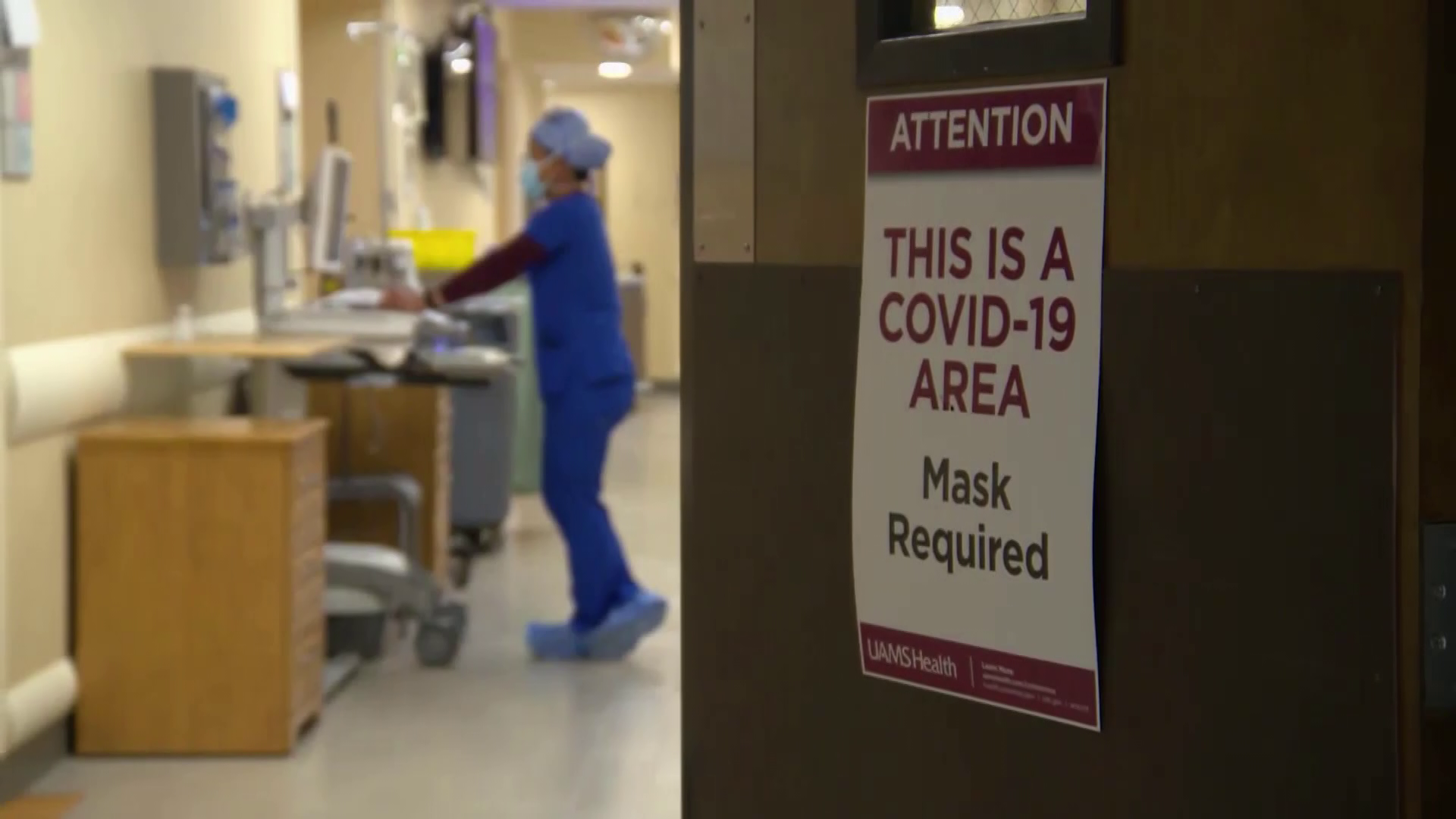ARKANSAS, USA — A report released by the University of Arkansas Medical Sciences (UAMS) forecasts a concerning rise in COVID-19 cases in the state over the following months.
Through July 11, the COVID-19 test positivity rate in the state is over 20%, five times higher than the national average, according to UAMS.
UAMS' 30-day model predicts Arkansas will be over 392,000 infections by August 9, an increase of almost 36,000 cases - an average of 1,236 cases per day. Their model also suggests that there will be over 20,000 hospitalizations by August 11, a daily average of 48 new patients. Due to the rise of the Delta variant and resistance to get vaccinated, UAMS says their models could be lower than the actual outcome.
The news comes as Gov. Asa Hutchinson tours the state, pleading Arkansans to get vaccinated against the virus. But, Hutchinson also signed into law a bill during the last legislative session that bans local governments from enacting mask mandates and another measure banning school districts from requiring students to wear masks.
"All counties in Arkansas are experiencing low COVID-19 vaccination rates," the UAMS report states. "In the last month, no county has exceeded a 5% increase in the number of persons over 12 who are vaccinated."
UAMS believes that Arkansas is at the beginning of an exponential surge, which may exceed what the state experienced last winter during the height of the pandemic before vaccines were widely available. They also believe the lack of response to a "third-wave" of cases will harm the state's economy.
"The new surge will have both short- and long-term economic consequences. As infections and hospitalizations increase, there will be a natural reaction on the part of the public to self-isolate. We may even see a return to hoarding behaviors exhibited last year. Both self-isolation and hoarding will have a short-term impact. The long-term impact will result from increasing numbers of employees who are seriously ill and unable to work, increasing number of employees who will manifest long-COVID symptoms, and disruptions to the supply chain. There may even be economic consequences if Arkansas is perceived as an unhealthy vacation or conference destination."
Due to a drop-off in COVID-19 testing, UAMS believes the scope of the pandemic in Arkansas is not being highlighted and that the best data to track the virus with may be hospitalizations.
"Arkansas is now entering a new surge due to the presence of the Delta variant of COVID1-9, the summer social gatherings including summer camps, and the lack of mandated prevention measures, such as wearing facemasks and social distancing."
UAMS believes in future planning on how to combat a future health crisis, state leaders should focus efforts on rural, resource-constrained counties in Arkansas with an emphasis on innovative strategies for providing health care services.
At the moment, adults age 60 to 74 are being hospitalized the most with COVID-19 symptoms. UAMS believes the greatest increase in cases will be in adults aged 35 to 59 in the coming months. Researches also expect to see more new infections in young adults aged 18 to 34 and children under 17.
"As we said in our June report, “COVID-19 is not over in Arkansas. It is, at best, smoldering.” Well, COVID is no longer smoldering. It has broken out into a raging forest fire that will grow in size and strength. We cannot stand still. We must act to reduce the consequences of this new surge to the extent possible."

